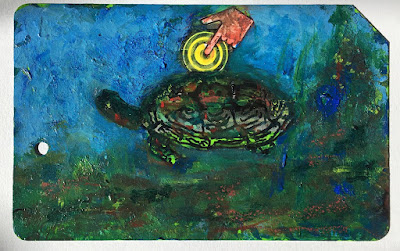VMN nature Journal by Meera Rao
The field trip in April to Pine Grove Nature Preserve maintainted by the Nature Conservancy filled four pages of my journal. Endangered Red Cockaded Woodpecker Picoides borealis and the long leaf pine are their main focus and efforts to restore both the species are in full swing. I took a lot of photos and notes and worked on the journal at home.
I was fascinated by the Bluets Houstenia caerulca - the beautiful tiny blooms littered the forest floor. Until the field trip, I was ignorant of the jelly like Spotted Salamander eggmass in the vernal pools. One of the cohorts caught a Spring Peeper frog and we saw the little guy upclose :)
Spotted Salamander Eggmass photo by Meera Rao
VMN nature Journal by Meera Rao
The Cockaded Woodpeckers in the nature preserve are one of the last breeding population in Virginia and the restoration efforts are bearing results. The male has a small red speck on each side of his head/cap. These birds nest exclusively in live pine trees!
VMN nature Journal by Meera Rao
We saw the different kinds of pines and saw and felt the differences in the varieties of pinecones. The controlled burning of the forests are a necessary part in the growth of Long leaf pines and in turn the cockaded woodpeckers.
VMN nature Journal by Meera Rao
We learned to identify coyote foot prints and scats. We also heard many different birds but saw a few Brown headed Nuthatches Sitta pusilla which love pine trees! It has a high pitched 'kit-kit-kit' vocals. It was also the first time I noticed a colony of British Soldier Lichen' Cladoria cristatella - since then I have seen them in a few places around here !
